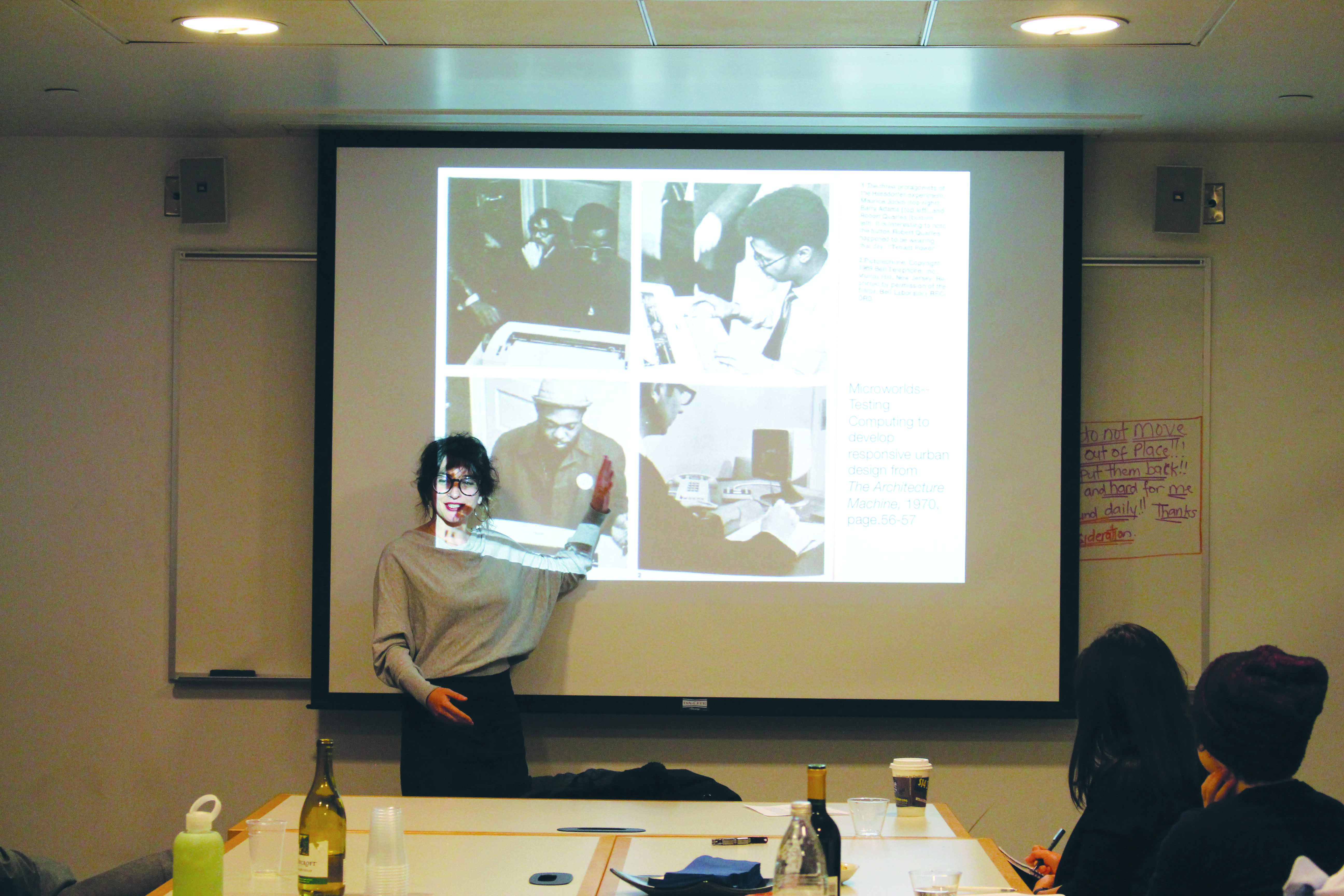
In a Tuesday evening talk, Orit Halpern bridged the gap between cybernetic theories and urban planning challenges.
Titled “Demoing unto Death: Smart Cities, Environment and ‘Apocalyptic Hope,’” Halpern’s talk constituted the latest installment in the History of Art Department’s “Modernist Forum” fall lecture series. Halpern, an assistant professor of history at the New School, presented a chapter on MIT’s “Architecture Machine Group” — a subdivision of the Massachusetts Institute of Technology architecture program — drawn from her forthcoming book, “Strange Agency: A History of Post-War Intelligence.”
“Dr. Halpern is an exciting, emerging voice in the field, and her research presents a really fresh take on art history and the history of science,” said Lucy Hunter GRD ’19, a Ph.D. candidate in the History of Art Department and co-director of the Modernist Forum.
In her presentation, Halpern discussed several of the Architectural Machine Group’s projects, focusing on those that respond to “imaginary apocalypses, data and smart cities,” as well as those concerning the architecture of perception and interactivity.
As a case study of how she thinks projects that place too much emphasis on data can transform something inherently dynamic — in this case, a city’s urban fabric — into a “ubiquitous, plain project,” Halpern highlighted South Korea’s Songdo International Business District, a new “smart city” currently under construction about 65 kilometers southwest of Seoul. She explained that the ads for the development suggest that the new district will be able to withstand future disasters, a claim she said she takes issue with, adding that she thinks that digital modeling and demos are useful for devising new technologies but do not allow their users to attack particular problems and instead present generalized idealizations.
“We’ve gone from sustainability to resilience. Resilience is now, how do we manage shock, to survive,” Halpern explained. “We’re always running these demos for housing for the ‘other half’ and other examples of prototyping in terms of resilience.”
Halpern highlighted that in many ways, the self-ordering system, which can organize itself according to demand, is the fantasy of future cities and urban constructions. She said the Tokyo subway system, where there is no central control, is an ideal system that organizes itself in such a fashion adding that “smart” is now often seen as equivalent to “sensing.”
She also referred to the Architectural Machine Group’s 1970 “Seek” exhibition, held at New York City’s Jewish Museum, which she said dealt with many of the same challenges that face urban planners. In the exhibition, a group of gerbils was allowed to roam in an environment of computer-controlled blocks. Contrary to what the experiment designers had anticipated, the programmers were not able to successfully anticipate the gerbils’ moves. They outsmarted the computer, and the project created disarray.
Many students who attended the talk said that they found it refreshing to hear this highly specific discourse around the Architectural Machine Group bridging the gap between science and the issues surrounding architecture and urban planning. Hunter explained that Halpern’s material, in her opinion, appeals to a wide variety of audiences because of its ability to bring together history, art and science.
“I thought it was really interesting looking at the way she ended with resilience or sustainability,” said Dante Furioso ARCH ’16. “It symbolizes the way that we think about our relationship to the world and our relationship to the future.”
Orit Halpern is the author of “Beautiful Data: A History of Vision and Reason Since 1945.”







